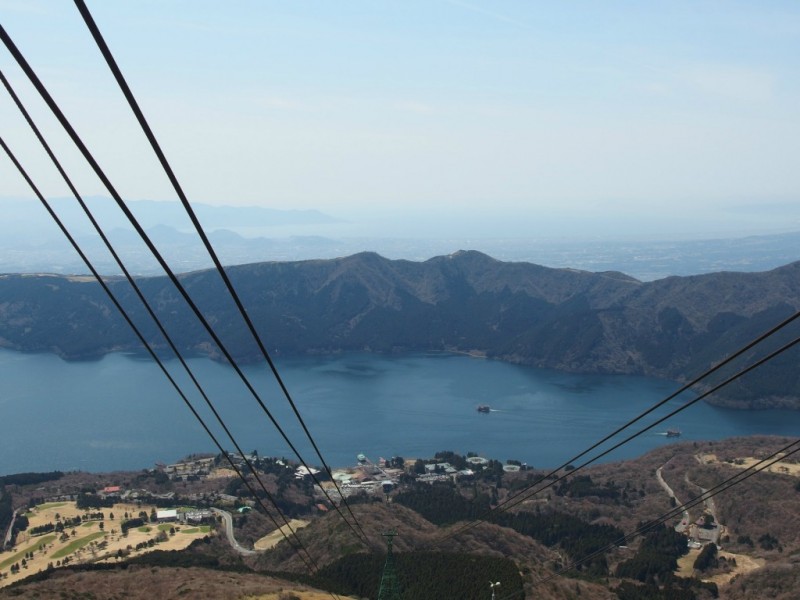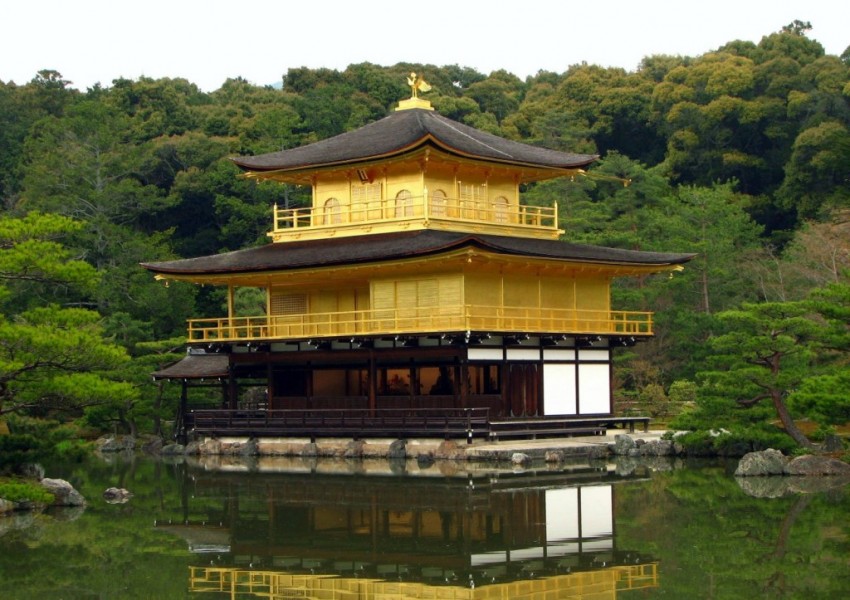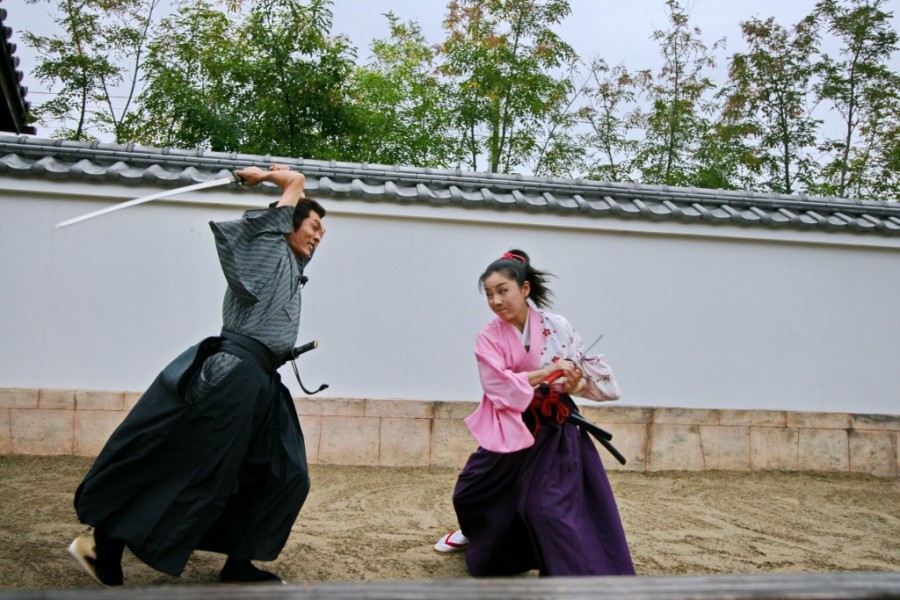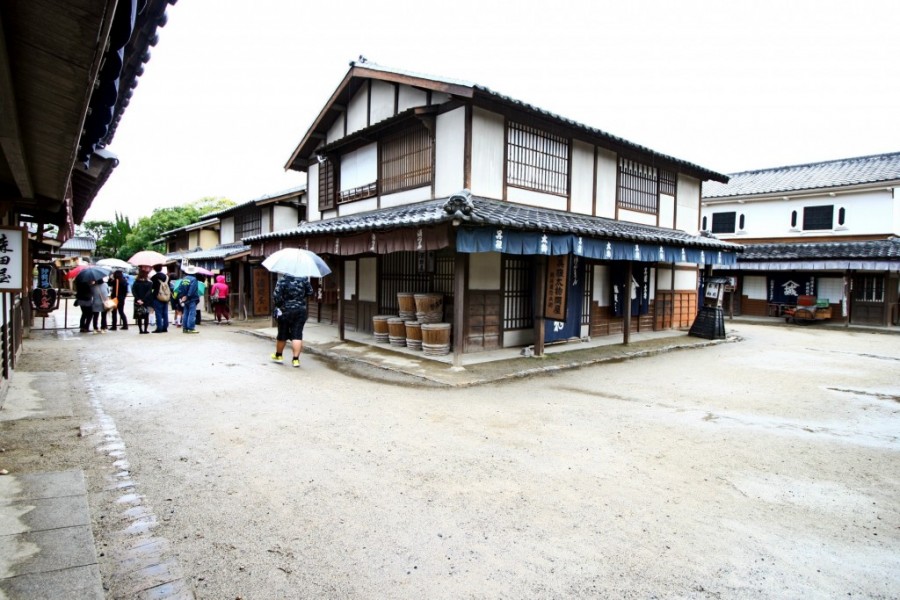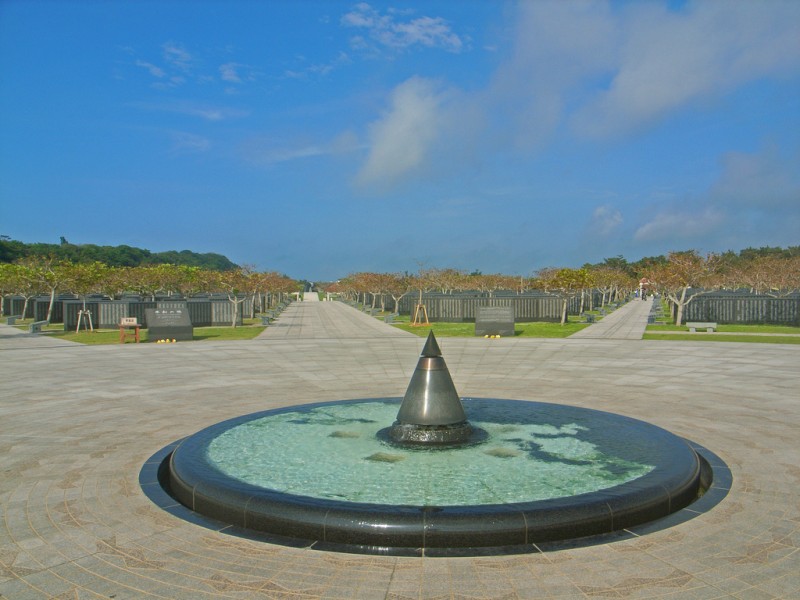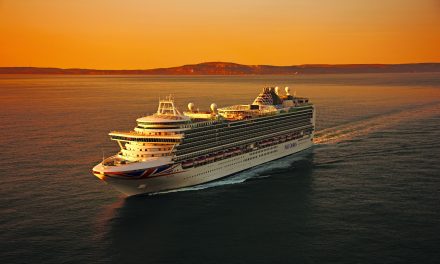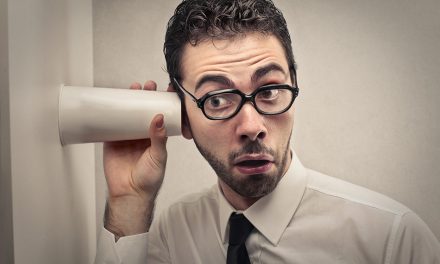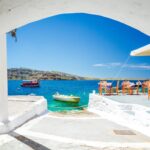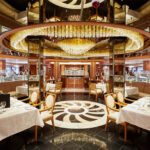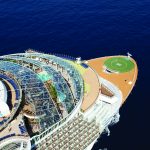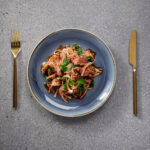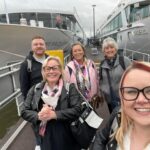Today the www.CRUISE.co.uk team would like to introduce you to a new concept in cruising, a new concept in escorted tours; in fact, a new concept in holidaying!
These will be in-depth, immersive experiences taking you to some of the furthest flung reaches of our planet. You’ll be given the chance to do and experience things you’ve never even imagined before.
If a typical holiday would fly you over the Grand Canyon then we’ll land you on it’s floor. If a cruise sails you past the Galapagos we’ll get you off to go walking amongst the penguins and giant tortoises. If you can dream it – we’ll be offering it!
The first cruise we’d like to showcase will take you to the ancient and venerable country of Japan where an intriguing mix of modern technology and centuries old traditions meet… And we intend to show you them all in one glorious trip.
You’ll get the chance to ride the iconic bullet train AND relax, surrounded by feudal architecture as you watch Japans famous snow monkey’s come down to bathe in the hot springs of Jigokudani Monkey Park (and that’s before we even get started on Tokyo, Okinawa, Mt Fuji or the beautiful Diamond Princess).
Your journey will start in Tokyo, capital city of the Land of the Rising Sun, cultural hub for all things weird, wonderful and all the in between. Flying in from the UK you’ll have a full day and two full nights at your leisure here so if you’ve never been to Tokyo before, there’s a handful of essential things to see and do…
First, you just have to see Shibuya Crossing – the World’s Busiest Intersection. One of the most famous crossings in the world, up there with New York’s Times Square. There’s something almost hypnotic about the entire crossing waiting patiently, only for a flood of people to cross, merge and then go on their business…
And of course no trip to Japan is complete without a real taste of the local culture! Edo Castle has stood in Tokyo since 1457 – before the city was even known as Tokyo! The castle itself is utterly gorgeous with the iconic Eastern-style rooftops. The surrounding park is also particularly lovely, especially when the cherry blossoms are in bloom…

The last place you simply have to visit is Shinjuku – every shopaholic’s dream! At the heart of Shinjuku is Shinjuku Station, one of the busiest train stations in the world and surrounding that is a sprawling marketplace where you can buy almost anything! There’s Japan’s largest electronics retailers, fashion boutiques, restaurants, street vendors – you could happily get lost here!

After all that it might be good to get away from the more commercial side of Tokyo and take a relaxing stroll through Ueno Zoo, Japan’s oldest zoo. Giant pandas, gorillas, llamas, birds of paradise and many more are waiting to be seen!
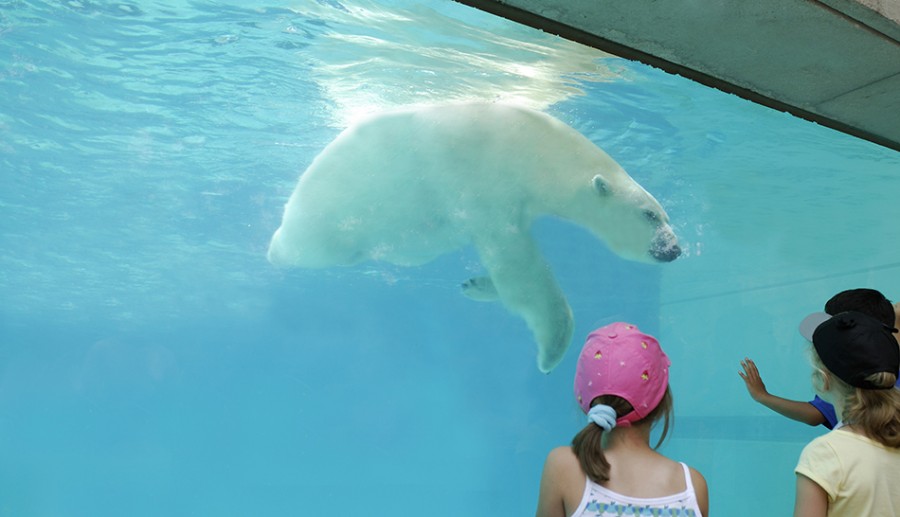
The above’s all well and good but if you’ve been to Tokyo before you’re probably thinking been-there-done-that, so how about something slightly different? Here’s a few alternative essential sights you might enjoy…
What about Harajuku? If you haven’t heard of the place before, don’t worry, just know that it’s a different side of Japan to that which you may have already seen. Harajuku is a district in Shibuya and is known as the epicentre of Japanese youth culture and fashion. Harajuku Style, as it has become known, is a worldwide cult phenomenon with many fans of Japanese culture visiting the district as if it were a holy pilgrimage. If nothing else, it must be seen to be believed.

We’ve already mentioned Shinjuku’s shops and restaurants but if you’re looking for a truly memorable meal you have to visit Blackhole; a restaurant where you’re given a small BBQ to roast your own beef, chicken and other meats. The hospitality is known as exquisite – as is the food!
The final place tourists both new and old should look out for is Don Quijote, one of Tokyo’s biggest and most diverse department stores. What you can find in Don Quijote ranges from the utterly mundane to the totally absurd, such as a rubber mask of Michael Jackson’s face or a computer headset which features cat ears – cat ears that move when the headset detects that you are happy.
The below is an advert that screens all over Japan to advertise Don Quijote…. It may give you a better idea of what to expect.
After leaving Tokyo you’ll travel through spectacular rural countryside before arriving into the Japanese Alps, officially known as Yudanaka, where you’ll be escorted to Jigokudani Monkey Park.
The Snow Monkeys of the park (otherwise known as Japanese Macaque for the David Attenborough’s amongst you) are the unofficial symbol of Japan. They are beloved by tourists and locals alike and get over a 100,000 visitors a year… So what makes these monkey’s so popular? Surely it’s the endearing way that they bathe in the local hot spas.
Back in the ‘60’s, (or so the story goes) a group of baby monkeys discovered a hot pool outside a local inn. The harsh Japanese winters and temperatures of minus ten led the babies to the warm water and they started to play in it – and the idea soon caught on with the rest of the monkeys! Now you can see them all bathing regularly and going up to their heads in the water. Their regular past times in the pools include sitting and grooming each other, running along ropes above the water and playing with tourists’ cameras.
To get to the monkeys you’ll need to walk through beautiful snowy forests and you certainly won’t be disappointed once you get face to face with the furry bath-takers. It’s not like visiting animals in a zoo, as these docile creatures will happily climb all around you – letting you get closer than you thought possible with nature. Just make sure they don’t steal your glasses or hats!

After you’ve seen the monkeys you’ll be given the opportunity to explore the more remote areas around the hot baths. There are plenty of local spas in the surrounding region if you want to join the monkeys and have a pamper. Another hidden gem is nearby Baioji Temple which is a perfect spot to relax with a hot foot bath. You can also ensure your own good fortune by wiping the monk statue inside with a cloth – as it’s supposed to give you a longer life if you do… we can’t promise this though!
After leaving the Jigokudani Monkey Park you’ll be transferred by private coach to the Mt Fuji visitor centre, located in the spectacular Fuji-Hakone-Izu National Park.
At 3,776 meters tall, Mount Fuji is Japan’s highest mountain but did you know that it was also a volcano that has been worshipped for centuries? It has an important place in the heart of the Japanese peoples and whilst it hasn’t erupted since 1708, it has continued to inspire writers, artists and locals for centuries.

It’s one of three “holy mountains” in Japan that attracts thousands of pilgrims every year. The foot of the mountain is said to be haunted by demons, ghosts and goblins but if you aren’t interested in going on a ghost hunt, why not try hiking part way up it? If you aren’t feeling that active, enjoy the hot springs spa or hang out in one of the cafes lining the lake shore.

After the beauty of Mt Fuji the day before get ready for a once in a life time opportunity on day six of your Japanese adventure as you cross the crater of Owakundani over the Hakone ropeway. You’ll be travelling by cable car over molten rock and volcanic rivers and have spectacular views of the surrounding area. Visitors can see the crystal clear waters of Lake Ashi from up high as well as the snow peaked tips of Mount Fuji in the distance. It’s the perfect way to see the area – without hours of trekking!
If you venture on a ten minute walk from the ropeway station you’ll find a volcanic zone of steam vents and bubbling pools. Why not try one of the eggs that the locals cook in the hot water, which are turned black by the sulphur… they may look a little strange but they are said to extend someone’s life by seven years if you try one!
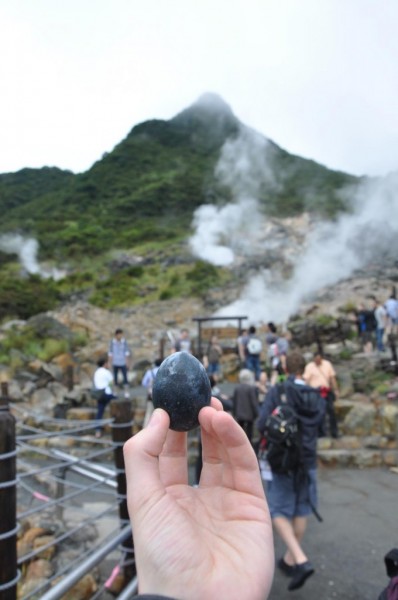
Image Credit: B Campbell
After traveling along the Hakone ropeway you’ll be escorted to one of Hakone’s most famous sightseeing opportunities… which just so happens to be a full scale replica pirate ship! You’ll sail around Lake Ashi on a half hour cruise to view more of the stunning scenery around Mt Fuji. It’s a great way to get from one end of the lake to the other so that you can see more of the area. The best spot to see the sights from is on the top deck, so remember to pack a jumper!
As you sail you’ll also be able to see the striking red gateway which leads to the Hakone shrine. The entrance marks the gateway into the holy shrine which lies hidden in deep forest. You can access it by following the lantern lit stone stairs up through the pine trees and once at the top you’ll find the original building. It’s a great photo opportunity as well as a chance to learn about the local culture and religion.

That night you’ll stop in a Hakone hotel with Mt Fuji making a panoramic backdrop before boarding Japan’s most innovative and famous technical marvel… The Bullet Train…which runs on time to the second and keeps the thousands of commuters on time for work every day. However, it’s not just a vehicle for commuters but an amazing way for tourists to zip from one part of Japan to another.

Originally built to connect all of Japan’s major cities to Tokyo, the trains whisk you along at 320km/h. With generous legroom and courteous on-board cleaners and service, they reign supreme the world over- and have to be seen to be believed!
Despite their speed they’re one of the safest modes of transport in the world and as an added bonus announcements are multi-lingual, so you won’t miss your stop! You’ll catch your train from Odawara station to Kyoto, which is otherwise known as the capital of “traditional” Japan – despite its futuristic looking station!

You’re only in Kyoto for two nights (with one full days’ worth of sightseeing) so the question almost becomes how to best make the most out of a place known as the City of Ten Thousand Shrines.
Clearly you’ll need to see a shrine or two as no trip to Kyoto would be complete without that… but which shrines? How do you choose between the ten thousand? And what else should you do?
If your hearts absolutely set on seeing a shrine then the www.CRUISE.co.uk team’s top tip would be to visit the Fushimi Inari Shrine.
As fascinating as all of Kyoto’s shrines are they can sometimes all blend together after a while (especially if you see a lot in a short space of time).
Fushimi Inari alone tends to stand out…

To start with it’s an all day trip and will involve a (small) hike up the side of the mountain. It’s not too arduous but can get quite hot so make sure you dress appropriately and wear shoes you’re happy to walk in!

The bright orange pillars are certainly eye catching as are the numerous fox statues and shrines on the walk up. You’ll also find a lot of street hawkers and vendors on your way up selling delicious foods and beautiful souvenirs (although we’d probably recommend you save the souvenir hunting for the trip down to save you lugging them all the way up the shrine!).

Best of all the start of the trail to the shrine is located near the Fushimi Inari train station (weird that!), so it’s really easy to get too as well!
If you don’t want to spend the whole day visiting just one shrine then our top tip would be to go visit Kyoto’s two most iconic shrines instead – Either Kinaku-Ji or the Silver Pavilion.
Kinaku-Ji is a beautiful example of 14th Century Japanese architecture as well as Muromachi garden design (the traditional style of Japanese gardens). Covered completely in gold leaf this shrine is certainly eye catching after the 14th original was burnt down in 1950 by a mentally ill monk. The current reconstruction has stood since 1955 and as well as the shrine itself offers a tourists a tranquil walk through its gardens.
Be warned though… This is one of Kyoto’s most popular shrines for tourists and can become very busy very quickly! We’d say stay away if you’re not keen on crowds.
Strangely, the Silver Pavilion doesn’t actually have an ounce of silver anywhere on it! Built in 1480’s as a retirement home for the then Shogun it’s thought he ran out of money before the silver leaf could be applied!

After he died a few years later it was converted into the Zen shrine that it remains as to this day.
Known as Kyoto’s second shrine this is none the less well worth a visit. Whilst it may not have the same, immediate visual impact that Kinaku-Ji does it’s also a lot, lot less busy.

One of the nice things about visiting Japan is the juxtaposition between the traditional and the modern. We could talk on and on for hours about all the different shrines you should visit (there’s ten thousand of them after all) but if that doesn’t sound appealing to you there’s a whole host of other things to do.
If you want to experience some of Japan’s counter-culture first hand then you may want to look into taking a trip to the Kyoto Toei Studio Park.
It’s a working TV studio that also doubles up as a popular tourist attraction! You’ll find actor’s dressed up as Samurai’s and Ninja’s recreating famous scenes from Japanese movies with over the top sword fighting, facial expressions and ‘hammed up’ acting. Quentin Tarantino eat your heart out!
As well as the live shows however there’s a fake Edo-era samurai town you can wander around as well as displays of Power Rangers and Japanese Anime from the ‘80s forward.
It’s not one for everyone, but if approached with the right attitude can make for a very memorable day out.
If Japanese counter culture doesn’t seem like your thing then a trip to Gion probably can’t get more traditional.
It’s not Japan’s only working Geisha district but it’s certainly its most famous and well preserved. It’s collection of traditional Japanese buildings (some of which have stood for centuries), restaurants and teahouses will lend to a charming afternoon walking around enjoying the atmosphere.

Spend more than an hour or two in Gion and you’re almost guaranteed to see a Geisha or two shuffling along on their traditional zori sandals (no doubt getting annoyed by the hordes of Japanese tourists following them to take their pictures).
As a tourist you should be aware; whilst it’s quite possible you’ll see a Geisha (or Geisha apprentice) walking around Gion, it’s very hard for a Westerner to arrange a show and if you do manage to get quoted a price (itself very difficult as discussing money is considered bad form) you’ll find it extremely expensive!

So what else is there? In a word? Everything!
We’ve barely scratched the surface of this most fascinating of Japanese cities. You can literally throw a stone and hit something interesting (although we probably wouldn’t recommend that in case you break something).
17 UNESCO World Heritage sites, 1,650 Buddhist temples, 400 Shinto shrines, two of the old imperial palaces before the court was relocated, 20% of Japan’s national treasures, 24 museums and 37 universities.
One things for sure, you won’t be bored!
After leaving Kyoto you’ll head to Kobe by private transfer before boarding your cruise ship, the Diamond Princess!
The Diamond Princess is a mid-sized ship with around 2,700 passengers. She was built in Japan, so what better vessel could you wish for to take you through the Japanese waters? She was refurbished in 2010 for $30 million and weighs in at 115,000 tons.
On-board you’ll have Movies Under The Stars with films shown on deck with complimentary popcorn and blankets. Evening entertainment also includes enjoying music found in at least five venues every night, learning to dance ballroom or salsa in a nightclub or catching a show in the Princess Theatre.
You can expect great cuisine with three dining rooms and three speciality dining options which include a Sterling Steakhouse, Italian in Sabatini’s and Kai Sushi. Day time fun will come from taking a dip in the world’s largest open air Japanese bath, in the spa or dipping in one of the four pools or twice as many hot tubs. Alternatively, work out at the gym, practise your stroke on the golf putting course or learn a new skill such as hula dancing or ukulele!
All state rooms come with satellite TV, refrigerator, 100% cotton sheets, bathrobes and slippers and bathroom toiletries.
The first stop after you board the Diamond Princess will be Okinawa Island and if you take an excursion out to see it you’re you’re in for a treat – you’ll be treated to many picturesque locales, such as the Kerama Islands, Kume Island, Yaeyama Islands – and that’s just on the voyage in!
The Okinawa Prefecture covers more than 150 islands between Taiwan and the Japanese mainland and has a tropical climate that could rival the reputation of even the Caribbean! There beautiful white beaches, coral reefs, and deep-blue waters.

That’s not all Okinawa has to offer either, if you’re not all that interested in sandy white beaches and working on your tan then you’ll be happy to know Okinawa has a varied history, playing host to the Battle of Okinawa during World War II, when US troops fought a long battle to capture the Island for the Allied Forces. At the southernmost tip of Okinawa Island you can find the Okinawa Prefectural Peace Memorial Museum which commemorates the lives lost during the 92-day battle that raged on the island.
The significance of the Battle of Okinawa can be found everywhere on the island, including Shuri Castle. The castle became a barracks during WWII and ultimately became a casualty of the war, despite standing since the 13th century. The castle was re-built using reproductions of the original building plans in the early ’90’s and became a designated UNESCO World Heritage Site in 2000. The castle itself is beautiful, displaying the melding of Chinese and Japanese architectural that can be expected with the island being located in the East China Sea.

If you’ve still got time then you should visit the Okinawa Churaumi Aquarium – originally built to celebrate the island’s amazing nautical history, the aquarium has seventy seven tanks with the saltwater creatures having fresh sea water pumped into their enclosures from 350m offshore, 24/7. The main attractions at the aquarium have to be the Whale Sharks and Manta Rays. It’s one of only a handful of aquariums in the world that feature Whale Sharks and the aquarium is currently trying to breed them.

All of this and more is just waiting to be seen and experienced in Okinawa – one of the most special and fascinating places to visit in Japan, in terms of the climate, surroundings and even the unique dialect the locals speak in. An essential place to visit for history experts, culture fanatics and even tan-happy beach addicts.
The next port of call the Diamond Princess stop’s at will be Taipei, capital of Taiwan.
Known for its lively street scene, Taipei offers a wealth of skyscrapers, night markets, shopping outlets and the hustle and bustle of city life. The city is a mix of cultures, reflecting the city’s past occupations by the Japanese, Spanish and Dutch as well as influence from China. The result is a crazy array of sights and sounds that bombard your senses.
Standing over the city is the world’s third tallest building, Taipei 101. The strange looking tower (which is shaped like a bamboo stick) has five floors of shopping, dining and bars at the bottom, whilst the rest is offices and conference rooms. Standing at 1670 feet high the building is definitely worth visiting if you have a head for heights. The observation decks on floors 89 and 91 give you a fantastic bird’s eye view of the city!

Afterwards, make sure you also visit some of the famous markets. Shilin market is the largest and most famous but try Shida District market for a taste of Taiwanese chic culture or Huaxi Street market for a taste of the local cuisine. If you’d rather visit higher end shops, visit the city mall which is located underground. It’s connected to both the metro station and the train station, meaning a day’s exploration is easy!

If you get tired of the busy streets then why not head for the hills? Tourist favourite Elephant Mountain is the perfect spot for an afternoon picnic. Whilst it isn’t actually a mountain, this hill is a great spot to sit back and enjoy the views of the skyline. It’s only a forty minute walk from the metro station and is surprisingly peaceful considering its cosmopolitan location.

Top Tip: Head to Elephant Mountain around sunset and you’ll get some amazing photos of the city lights coming to life!
If you don’t fancy a hike, why not visit the local tea plantations instead? The peaceful fields are situated in the mountainside and Muzha Tea Plantations will give you a tour and tastings of all the local specialities.

Did you know? Bubble Tea was invented in Taiwan. The drink is very popular in trendy parts of London and other major cities but its roots are firmly set in the plantations of Taiwan. Try some – it won’t taste anything like tea you’ve had before!
If coffee is more your thing there are also places the locals call “cat coffees” or cat cafes as they are known to us! There are over fifty cat cafes to choose from and certainly promise an entertaining afternoon break for the animal lovers amongst you.

Become immersed in the local culture by visiting the Hsingtian temple. If you make an offering of food it’s said that you’ll ensure good fortune for yourself and your career! Afterwards head to Dalongdong temple (which has stood proudly since 1830) and Taipei story house in Taipei Expo Park (which is a museum of nostalgia and history of the city.) The park also houses the fine arts museum which is four impressive stories of marble as well as the Eco Ark, a strange looking structure made entirely of recycled bottles. This is definitely one for those who want some interesting photos to take home!

Fancy something a bit quirkier? Then try the Miniatures Museum of Taiwan. The exhibits include wonders like the world’s smallest TV with picture and sound, tiny buildings, dolls and a variety of dioramas with intricate detail. Themed exhibits include Phantom of the Opera and Alice in Wonderland. It’s surely worth a visit if you have a few hours spare to see the first museum of miniatures in Asia!
Taipei is a strange and vibrant city sure to give you a crash course in the beautiful wonders of the Far East!
If you know anything about Taiwan, you may have thought that Kaohsiung, the next stop on your cruise, was merely an industrial hub – but it’s transformed over the years into an oasis of culture. With two beaches and a forest it’s a great place to relax if you don’t fancy the hubbub of the city – but you’re surely missing out if you do!
After you disembark from the main transfer terminal you won’t be able to miss the huge Fo Guang Shan Buddhist temple, thanks to the enormous Buddha sitting on top but the grounds are more than just a gimmick, as it’s home to a real working monastery with male and female monks. The grounds are so large you can travel around by golf buggy and part of the tour includes visiting the caves underneath as you learn about the history of Buddhism and its culture.

Next, head to the Lotus Pond and surrounding temples. The most iconic of these twenty temples dotted around the lake is the Dragon Tiger Tower. After travelling in Asia you may begin to think all temples seem the same but you can’t miss each seven storey tower guarded by these huge animals. It’s a must see- even if only for the photo opportunity!

To try a bit of a nature trail head through the city to its Central Park. It’s conveniently accessible as it has its own impressive train stop, which also has synthetic fields of flowers lining the escalators. The park is beautifully lit up at night but if visiting during the day you can still enjoy the gardens, lakes and even a maze.

Top Tip: Hidden within the park is the Brickyard Beer Garden. It serves a range of local and imported beers as well as Chinatown style cuisine that isn’t to be missed!

If you thought the train station at Central park was impressive then you’ll love the Dome of Light installation in Formosa Boulevard metro station. This impressive stained glass structure is definitely worth a look, with its images of earth, light, water and fire so striking that it’s been voted the second most beautiful station in the world.

Alternatively, have a look at some of the modern art at Pier Two. Installations are dotted all over the lawns with figures of fishermen and labourers. There’s also an interactive heart beat lights pillar which syncs with peoples heartbeats to put on an impressive display.
Having been known for being the second largest port in Taiwan, Kaoshiung has now developed its river to accommodate boat rides. A half hour journey up the romantically named “love river” takes you alongside the beaches, cafes and local hangouts. It’s a great place to visit early evening as the lights switch on and it truly becomes Asia’s answer to the river Seine

Top Tip: visit the river during the Chinese New Year (during January to February) to see the lantern festival where the whole area will be lit up with whilst these lanterns are released in celebration.

You should find Hualien, your final port of call on your cruise, a much more rural, relaxed location than you’ll have visited on your trip so far… Your day here will be spent enjoying the natural scenery with plenty of breath-taking sights to be appreciated.
The Taroko National Park and the Taroko Gorge won’t leave you disappointed as it’s full of hidden temples, caves, waterfalls and sacred sites. Known as the “marble gorge” to locals, the valley has been carved by the river to leave behind a beautiful trail that makes for an enjoyable hike. It’s fairly easy and isn’t exclusively for experienced hikers! Several different paths are available and will lead you to hidden gems like the Swallow Grotto (a cave carved by the river), Changchun temple and Baiyang waterfall. You can get to the park via a bus journey but make sure to stop at Ching Shui Cliff on the way back for some seriously impressive views of the coastline.

Sadly after leaving Hualien you’ll be faced with your last night on-board the Diamond Princess as she sails back to Kobe where you you’ll be transferred in the morning for your flight home.
If you’re now interested in our incredible cruise – Escorted Japan With Mt Fuji, Bullet Trains & Snow Monkeys then you can find a lot more info on it by clicking here… where you’ll find details on pricing, flights (regional flights available), routes, transfers, cabin availability and deposits.
What do you think?
Would you like to bath with a snow monkey?
Have you already been to any of these destinations?
Let us know in the comments below…


